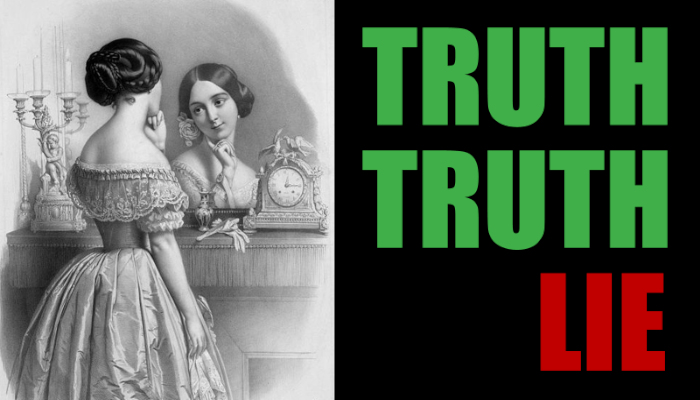
One of my favorite icebreakers is a game called Two Truths and a Lie, where you share three different “facts” about yourself with only two being true. Then you sit back and watch the group try to uncover the lie.
Wanna play? Here are my three:
- I have a United States patent
- I’ve had a bullet hit inches from my head
- I’ve used the Heimlich Maneuver on a choking victim
I love this game is because it’s packed with storytelling nuggets. For example, those trying to uncover my lie will say things like:
- “Ron’s an electrical engineer, so he could have a patent.”
- “He lives and works in an affluent part of Southern California, so where would a bullet come from? I don’t think he’s ever been on tour in the military.”
- “Does Ron look like the type of person who’d take a CPR class?”
Two Truths and a Lie offers wonderful lessons for budding storytellers. The story statements reveal just enough information to make the listeners want to know more. It creates mysteries which require skills in both inductive and deductive reasoning. Two Truths and a Lie works as an icebreaker because it’s built upon many of the story techniques used by the masters.
So, which of my three statements is a lie? Hmm…it’s time to teach you another storytelling technique called the cliffhanger. You’ll just have to wait for my next post.
Sorry. Not sorry.
In the meantime, what are your two truths and a lie?
Image Credit: Alophe, Lithographer. Le femme révées Ideal beauties ; Contemplation = contemplation / / compose & lithog. par M. Alophe ; Imp. lith. de Jacomme & Cie. , ca. 1851. Paris ; Berlin ; New York: Publie par Goupil & Cie. Photograph. https://www.loc.gov/item/99471879/.